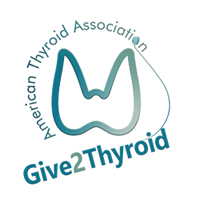Their consensus reports of the US findings were used as the “truth” for the nodule features. The other 8 radiologists—2 radiologists in academic practice and 6 in private practice—were test readers and had no knowledge of TIRADS guidelines. All the radiologists reviewed the ultrasound images and evaluated the nodules for the five features used in TIRADS, including composition (what the nodule looked like), echogenicity (darkness), shape, margin, and echogenic foci (bright spots on the images). The test readers assigned each nodule a cancer risk category that matched the five risk-stratification levels used in TIRADS (highly suspicious, moderately suspicious, mildly suspicious, not suspicious, and benign). The test readers also noted whether they would recommend a biopsy for each nodule. A comparison was made between the test readers’ recommendations with and without TIRADS guidelines.
The average age of the patients was 52 years. Of the 100 nodules that were evaluated, the average size was 2.7 cm. There were 15 cancers (15%) identified, with an average size of 2.2 cm, including 11 classic papillary thyroid cancer (73%) and 4 follicular variant of papillary thyroid cancer (27%). The average number of biopsies recommended by the 8 test readers was 80 with their own practice pattern and 57 with TIRADS guidelines. After applying TIRADS guidelines, the readers of each test had a reduction in the number of biopsies that ranged from 5% to 41%. After the TIRADS guidelines were applied, 5 cancers were not recommended for biopsy by some of the test radiologists and 3 cancers were not recommended for follow-up or biopsy because of incorrect categorization of ultrasound features by 2 of the 8 test readers.
If test readers had used guidelines from other societies (the American Thyroid Association, Korean TIRADS, or French TIRADS), the average number of nodules recommended for biopsy would have been 77, 85, and 74, respectively, as compared with 57 nodules with TIRADS. The 2 cancerous nodules that did not meet the criteria for biopsy according to TIRADS guidelines also did not meet criteria for biopsy with any of the other guidelines.
WHAT ARE THE IMPLICATIONS OF THIS STUDY?
By using the TIRADS guidelines from the American College of Radiology, one can see a significant reduction in the number of thyroid nodules recommended for biopsy and an improvement in the accuracy of recommendations for nodule management. With this system, the vast majority of the cancerous nodules will be recommended for biopsy or follow-up ultrasound.
—Alan P. Farwell, MD, FACE




